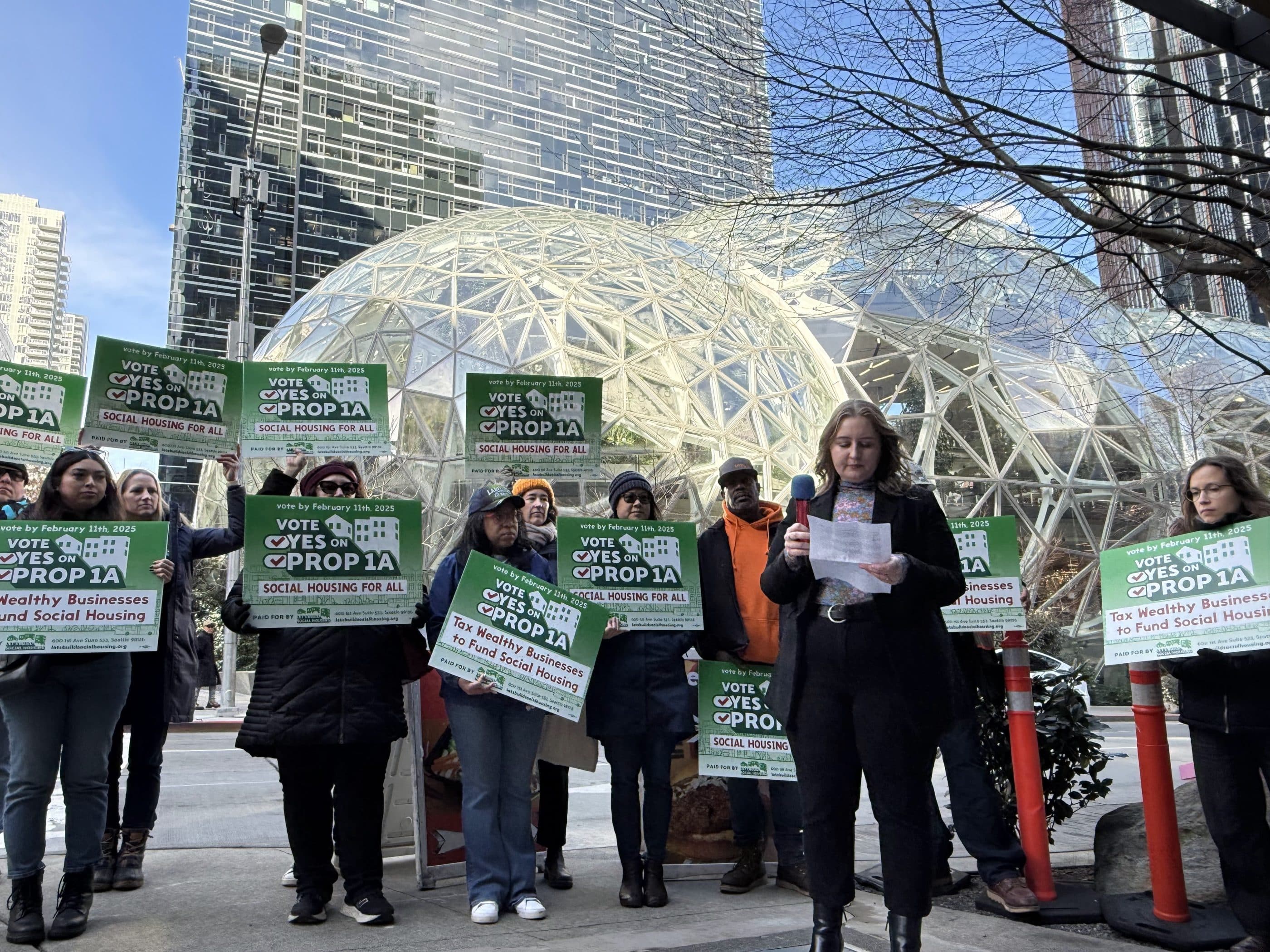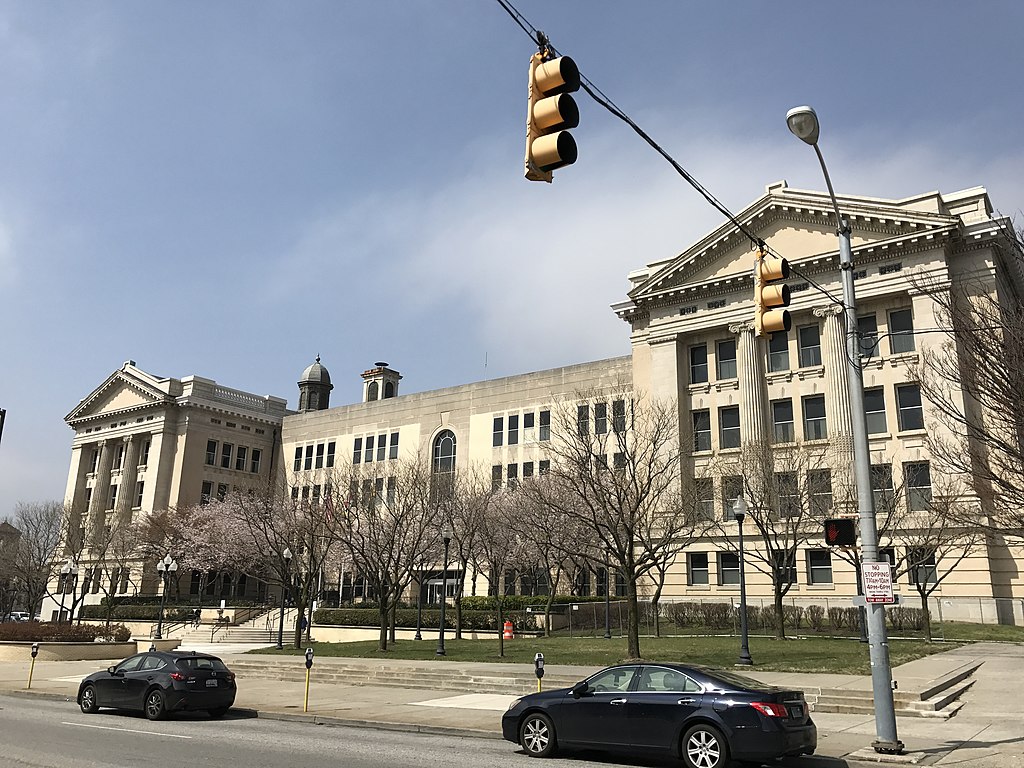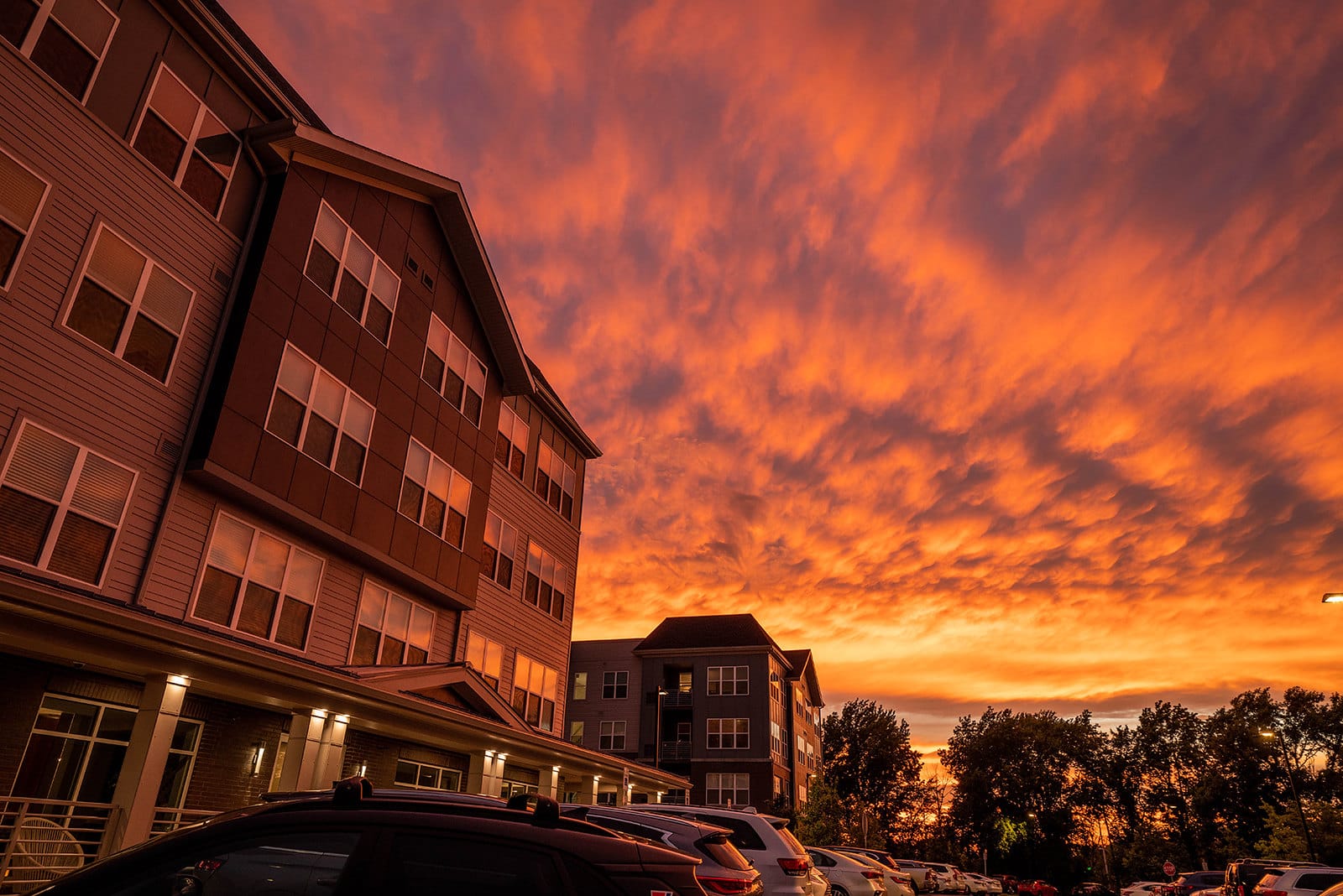Advocates for good cause eviction protections often face a particular counterargument from landlords: that these tenant protections cause a slowdown in new construction. New research indicates that they don’t. Although multiple states have active tenant campaigns pushing for good cause policies, advocates are having mixed success using this evidence to convince legislators and opponents.
The State of Good Cause
In its most broad definition—though states and localities include their own exemptions and criteria—good cause eviction policies guarantee ongoing lease renewal to tenants from their landlords, unless tenants have violated the terms of their leases or behaved unlawfully.
A number of states and localities have active good cause legislation. New Jersey, for example, has had a policy on the books since 1974. Other states have passed policies more recently, like California’s Tenant Protection Act of 2019. Last year, New York State passed a version of good cause. The law was mandatory in New York City, but other municipalities could opt in (with some tailoring available).
At the time of this writing, there is pending state-level legislation in Connecticut, Rhode Island, Minnesota, Maryland, and Hawaii. In Connecticut and Maryland, the bills won’t be advancing this year, though this isn’t the end of the road: Good cause eviction protections have been repeatedly introduced in both states’ legislatures.
But until recently, there wasn’t empirical research on some aspects of the policy. One question has been thriving in this research vacuum: Does good cause result in reduced new development and construction?
If yes, then good cause policies would exacerbate housing crises by constraining the creation of new housing, resulting in greater competition for units and higher rents. This is the point argued by developers. If not, then good cause is a useful tool (without notable downsides) to improve tenants’ housing security and reduce the chances of retaliatory evictions when they ask for things like repairs. This is the point argued by tenant advocates.
New Research on Good Cause
Tenant organizers and advocates wanted a better, evidence-based answer to this question. “Back in June or July [of 2024] we said, ‘Look, the landlord industry is saying that good cause harms development, and we think it’s total nonsense,’” says Matt Hill, an attorney who works on housing issues and policies at the Public Justice Center, a legal advocacy center in Maryland. “‘But is there any data on this?’” Hill says that the researchers couldn’t find any empirical research on the subject. “And so they did the work,” he says.
In early March 2025, the University of Minnesota’s Center for Urban and Regional Affairs (CURA) published a report comparing permitting for new buildings in counties in states that had recently passed some version of good cause—California, Oregon, and New Hampshire—to nearby areas without good cause protections. They controlled for county-level GDP, population, unemployment, and per capita income. They concluded that good cause did not have an effect on permitting, a close proxy for new construction.
In Maryland, this year’s state-level legislative session had much debate about good cause, illustrative of the debate happening in statehouses and localities around the country, although the legislative session ended without good cause being passed. However, the campaign has been ongoing for years—and advocates plan to continue the fight.
“We ran the original model, and we wrote an endorsement letter supporting the legislation,” says Kenton Card, one of the CURA researchers who offered his perspective in support of good cause to the Maryland statehouse. “[We] got 54 academics, some housing economists, and policy experts from around the world to sign on to that endorsement letter,” he says.
“We’ve been trying to say, look, I understand your fears, but there’s actual data here that says that this is not a thing,” says Hill. But after the research came out, the opposition “shifted the goal posts.”
Zafar Shah is an attorney at Maryland Legal Aid who has been working on good cause for eight years. He says that as the research results came in, the opposition shifted their talking points, and “it became very evident that now the question was no longer ‘Does good cause eviction impede development?’ Instead, Shah says, the new question was whether the combination of a new good cause law and existing tenant protections would “kill development during this housing crisis.”
Shah says that during his years of advocacy for good cause, separate tenant protections—rent stabilization and vacancy control—were fought for and won in many localities across Maryland. Rent stabilization limits how much rent can increase over years, and vacancy control limits how much rent can increase in a unit after a tenant moves out. But enacting good cause was different in Maryland because it was preempted by case law in the state. This meant that good cause couldn’t be put into effect in any locality until state-level legislation approved it.
After years of back-and-forth and different bills, the legislation most recently deliberated in Maryland would enable localities to “opt in to this [specific] form of good cause eviction, but no other form of good cause eviction,” says Shah. (The legislation only covers landlords who own six or more units). But the bill stalled in Maryland’s Judicial Proceedings Committee, where there was instead a proposed amendment that would have enabled good cause to be enacted, but only if localities with vacancy control removed those protections first.
State Sen. Will Smith, who chairs the Maryland Senate Judicial Proceedings Committee and pushed for the amendment, says that “there’s no reason to have vacancy control, good cause, and rent stabilization all at the same time. You can have good cause and rent stabilization and those things work together to protect the tenant… Just get rid of vacancy control and put in place good cause lease extension so the tenant is protected [from eviction].”
Smith acknowledges that without good cause, there is an incentive for landlords to kick out tenants to raise rents. But he believes that vacancy control is only necessary to achieve the same protections for tenants—and that having both is unnecessary.
Economics professor Jeremy Schwartz, one of the authors of the CURA report, says that although developers don’t want regulation, CURA’s preliminary research shows that it does not result in a change to developer behavior. “Anybody who’s got new paperwork to fill out, they’re not going to want to do it,” says Schwartz. “But there’s a big distance between that and actually changing people’s behavior, [and having developers] saying that ‘OK, I’m not going to build this multi-family apartment building, because now I have to fill out some paperwork that documents that this person has broken the lease in this way.’”
Smith disagrees. “We had a four-hour-long briefing in the judicial proceedings committee about this, full of people who do business in Maryland and are familiar with Maryland laws. And you had several developers stand up and say, ‘I will no longer do business in Montgomery County.’”
Pitting Good Cause Against Vacancy Control
But advocates believe that something else was happening: Developers felt more financially limited by vacancy control than good cause, and may have been using the push for good cause legislation to undo vacancy control. “Their play is to use good cause eviction to kill rent stabilization,” said Shah in March.
So although Maryland Senate leadership—Sen. Smith, as well as Maryland Senate President Bill Ferguson, whose office did not respond for comment—may have played a part in stalling out on good cause, their opposition is not backed by evidence that good cause will affect new construction.
“The wrong question is whether good cause lease extensions alone impact housing, says Smith. “I don’t think they do. The question is whether that, in conjunction with vacancy control and rent control, has an adverse impact on housing and I think the undisputed answer is yes.”
When asked for evidence, Smith’s office sent multiple documents. These included a NYU Furman Center report that states that an “unintended consequence of a good cause requirement may be conversion of rental housing into other uses not subject to the good cause requirement (and other regulations specific to rentals), and reduced investment in new and existing rental housing.”
When asked how the Furman Center drew this conclusion, Donna Borak, the organization’s director of external affairs, said in an email that “the concern about conversion and disinvestment is grounded in broader academic literature on rent regulation—cited in footnote 62 [of the report]—where we are careful to note that while good cause requirements would likely impose fewer costs than rent regulation, the closer a proposal comes to replicating rent regulation (particularly without vacancy decontrol), the more relevant that evidence becomes.”
The citations Borak was referring to largely center around rent stabilization, not good cause (although some researched the combined impact of multiple tenant protections, including eviction laws). The Furman Center did not respond to further questioning about specific evidence that good cause reduced investment in new and existing rental housing.
Smith’s office also sent blog posts about the National Multi-Housing Council Conference, with limited discussion of good cause. One takeaway from the conference was that Montgomery County, Maryland, is “redlined” because of increased regulation, and that investors may opt to invest elsewhere. The senator’s office also sent a link to the four-hour-long hearing from January where developers voiced their opposition to good cause.
Does Evidence Matter?
Tenant unions and advocates in other states have been citing the CURA research as well. In Connecticut, organizers with the CT Tenants Union used it since its release when speaking about the proposed legislation with elected officials, hoping to appease some of the concerns. But unlike in Maryland, the argument that good cause could decrease new construction has not been as prevalent, says Luke Melonakos-Harrison of the CT Tenants Union.
“The central point of discussion here is around landlords’ power to evict tenants at will,” says Melonakos-Harrison. “The main argument for that being just the sanctity of property rights and the importance of being able to evict problematic tenants who are causing issues with neighbors without having to go through the eviction process and prove it to a judge.”
When asked whether the research is effective in convincing anyone in Connecticut that good cause is a tenant protection with little downside in regard to new construction, Melonakos-Harrison said, “It’s helpful for playing defense. I don’t know that it’s very helpful for playing offense, and advancing the argument.”
“I always love to say, New Jersey has had the strongest version of good cause for 50 years,” he says. “And there, they’re beating Connecticut right now in their rate of development. So if it was that strong of a correlation, then New Jersey should be way behind us, but they’re ahead of us.”
In Rhode Island, good cause is being discussed during the current state legislative session. Campaigners with Reclaim RI, an organization that campaigns for a range of progressive legislation, are hopeful that the policy may pass this year. Dennis Hogan, a campaigner with the organization, says that a landlord/tenant commission formed to clarify and modernize housing policies was finding CURA’s research to be useful. “We’ve been able to present that research at the Commission, and that’s where I think it’s had a big effect,” says Hogan.
“I don’t know that the public needs the same level of data as policymakers,” said Hogan, when asked if the data was useful in campaigning. “The public actually lives the housing crisis. It’s the policymakers who are constantly hearing sky-is-falling stories from landlords, and so that’s where we really need to intervene to counter that narrative, and that’s where [the research has] been most useful.” Hogan also provided a pamphlet that had been given to the state general assembly by opponents of good cause, which reads, “Just cause just doesn’t work” and “Protect a property owner’s right to decline lease renewals” and listed four points without citations, one of which was “reduced housing supply.”
The public narrative around good cause may be less responsive to research than it is to developers’ talking points—even if they’ve been proven wrong. “One of the interesting things we found has been [that] even right after we testified with these results, some of the coverage immediately reiterated that landlords’ claim,” says Card. “If the landlords keep saying that, journalists will keep repeating it … and that goes with politicians too.”





Comments